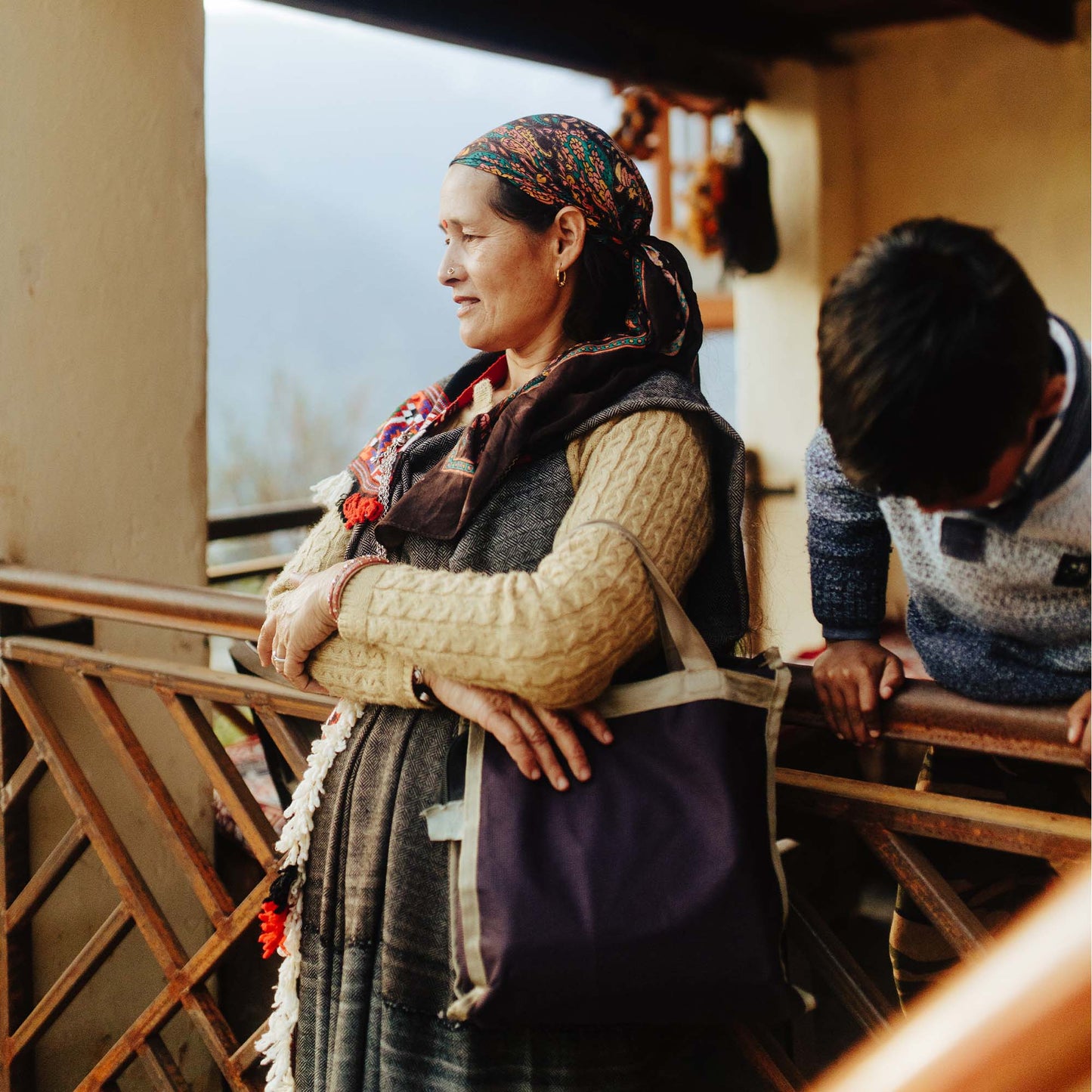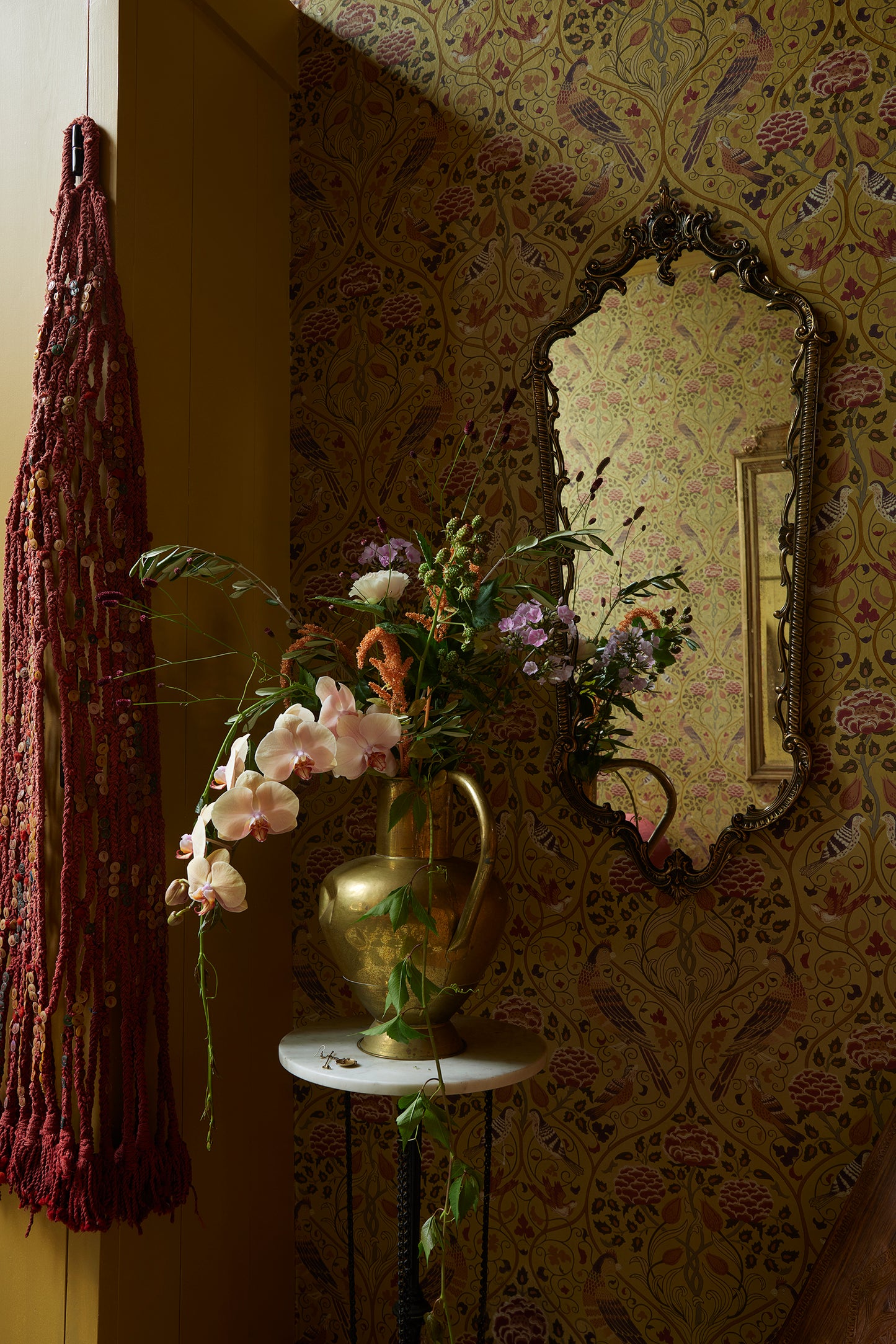Hollandaise Source - HOUSE OF ZAZI
By Emma Becque
Photography by Inge Prins
Via The World of Interiors.com
The entrepreneur behind Zazi Vintage rents this 17th-century home, which serves as a love letter to her Dutch heritage, as well as a stage for her fashion boutique.
When hunting for a long-term rental home in 2022, in the artisanal Jordaan district of Amsterdam, Jeanne de Kroon of Zazi Vintage was drawn to the undisturbed delft tiles in a 1642 canal-side town house, sandwiched between two identical buildings. The fashion boutique founder felt kinship with a tile depicting a swallow, which represents Jeanne’s ‘birth bird’. Another, an arrow-shooting Cupid, ‘honours the healing source of love’ she yearned for. It soon became clear: this was her ‘meant-to-be home’. Prominent on the walls, several other storybook tiles paint narratives of harvest workers and milkmaids, reminiscent of the long-forgotten livelihoods of the 17th-century Hollanders whose relationship with the land was so symbiotic. Akin to the dancing squares decorating her home is the textile entrepreneur’s present-day life; as though mirroring the tile’s depictions, Jeanne herself has longed ‘to come home’ and retrace ‘her ancestral past’ through decorative displays.
After years of being on the road, Jeanne sought to bring history to life in her home, using archival resources as her catalogue, as well as leaning on her family of weavers and artists. The entryway – often seen on her Instagram feed, where she models her Zazi Vintage clothes – is set against bowing glass panels and towering monumental walls dressed with William Morris ‘Seasons by May’ wallpaper. The transformation of the long-term rental was a collaborative effort involving friends, family and neighbours, an ethos reflected by Zazi’s mantra – ‘a global sisterhood bonded by craft and intention’. With a friend, Jeanne embarked on a European journey of playful detective work in the form of auction bids and market trawling. An ode to this adventure is an 18th-century oval mirror flaunting an intricate ivy vine paired with an oversized golden water decanter given new life as a vase filled with orchids, floppy greenery and orange muscari, an eclectic look loved by the Dutch florists at the local Noordermarkt.
A bicycle rests in the entryway of the 17th-century Bloemenmarkt canal-side home in the Jordaan area of Amsterdam. The plaque at the top honours ‘de landman’ (the farmer).
The spiral dance of the wooden staircase, a counterpoint to the monochrome melody of the original marble chequerboard flooring of 1642
A cosy corner crammed with Zazi Vintage garments, auction finds and Himalayan souvenirs on a backdrop of William Morris ‘Seasons by May’ wallpaper
Hand-me-downs from a cherished antique-collecting neighbour liven up the living room. Jeanne gleefully salvaged a discarded Brutalist armchair and stately mahogany chaise-longue. The latter is now outfitted in a throne-like rogue linen from Evert Groot and dressed with Palais cushions in contemporary pastel pinks. Another anecdote is found in a Dutch antique harvest lamp, once a functional candle-holder in the 19th century, now serving as decorative motifs crowned with handmade ‘Ava’ gold-and-red frilly lampshades, also from Palais.
Beneath the beams, find a functional kitchen, and hear the carolling of birds and church bells in the shared garden. A cream Smeg fridge and Russell Hobbs kettle offer a quick reminder of the practicalities of a modern-day rental. A new lick of paint along the chef’s block countertops and cupboards freshens up the space, next to the all-too-familiar withering potted herbs. The remainder of the kitchen area is canopied with the same William Morris wallpaper that lines the foyer, only this time incorporating a mint green and clay undertone to marry with the Little Greene aquamarine paint gracing the left-over walls and crevices. A kitchen staple of 17th-century life, an overarching brick-laden hearth enshrines a minute collection of delft tiles depicting a communal scene, which, for the founder, echoes her present-day practices. With snapshots into history, Jeanne’s home can be likened to a museum where renowned Dutch old masters’ domestic scenes have been realised. Two artworks that come to mind are Pieter de Hooch’s Interior of a Dutch House, on display in the National Gallery, and his Card Players in a Sunlit Room, a part of the Royal Collection. De Hooch is known for his idyllic portrayal of light, and Jeanne’s house is similarly flooded with glimmers both physical and spiritual: the chimes of her neighbour’s voice calling her for supper only amplify the sense you’ve stepped back in time, to an era when communal living was championed.
Encasing the monumental stove is a stark, untouched red plank holding a totem of trinkets, ceramics, leaves for tea plucked from the garden and ceremonial singing bowls. In contrast, a stern prominent wooden table, sourced from a hofje home, the Dutch word for a courtyarded community just for women (some remain today), bears the scars and scuffs of history. At the same time, the feminine antique French wicker chairs inject softness. The artefact-filled tablescape rejoices in kitchen scenes of forgotten pasts, making it a female-orientated space intended to host ‘suppers where creative female minds can share stories and creative touches’.
The winding stairs lead to a ‘haven’, aka Jeanne’s study. Saturated with purple limewash, the room is a decorative shrine to Zazi. A stack of unused frames leans against the wall, ‘with one deriving from 1642, the same year as the house’. A Persian suzani (unused Zazi stock) upholsters an antique chair, and its pattern tells a story of unconditional love. On the wall, a long-treasured old Indian miniature painting depicting female friends was discovered in a Mumbai market and has followed Jeanne her entire life; it inspired an entire rack of golden Zazi garments. In this layered pocket-sized space, intimate vignettes catch the eye. A collection of antique Dutch pots alongside drop spindles and sample fabrics rest on a hardy desk, while a mannequin, rescued from a dazzling Parisian perfume store of 1870, stands tall in the corner. Nearby, a German dowry box houses swatches.
Unlike the remainder of the home, the primary bedroom is informed by a foraged antique textile draped across the modest bed. Like the interior of a nostalgic dressing-up box, the restful room is cleansed with limewash paint in dusky pinks that work with the pastel yellows outlining the traditional beams of the monumental ceiling. In this, the most humble room in the home, the muted palette epitomises Jeanne’s serene nature.
Sky-high in the attic arches lies the ‘sunshine room, which is a love letter’ to her mother and a refuge for friends. Wrapped in Farrow & Ball ‘Lancaster Yellow’ paint accented with baby-blue beams and seafoam-green linen curtains, the guest bedroom pays homage to childhood innocence. Tucked away in the eaves, the room exhibits a ruby-red crushed-velvet armchair ‘nearly chucked but now refound’, which is hugged by a wall hanging from Tajikistan, a fond souvenir from Jeanne’s travels with the UN for the Ethical Fashion Initiative. A hand-painted trunk depicting folklore tales is padded with an Indonesian fabric housing an array of musical instruments often jangled by friends and family – each originating from a different land. This overlooked bedroom showcases the clever interplay of past and present, whereby Jeanne has crafted a space allowing history to breathe life into every corner, including her own. Moving through this sensory home, you grasp the founder’s personal and professional journey. It unravels through the slimline building and is transparent in this ‘sunshine room’ – the perfect balm for a wandering creative on her return home.








